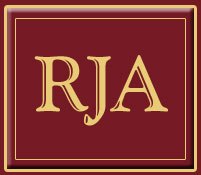I want to believe there is agreement among reasonable people that racism continues to exist in America. In my opinion, racism is unacceptable, fosters divisions, begets stereotypes, engenders social conflict, enflames hate, fuels violence, marginalizes individuals, relegates groups to inferior livelihoods, impedes education, promotes ignorance, and erodes civility, respect and dialogue. A precocious 16- year-old asked the Australian Human Rights Commission - “Why do people think that something as permanent as race, something we have no choice in, can make us better than another person?” Richard Vasquez in his Chicano: A Novel writes “Mientras se duermen, todos son iguales” (While asleep, all men are equal).
What I have found is prejudice and racism are often used. Although related, these terms are not synonymous, often misunderstood and can be confusing to most people. Arlin Cuncic in her Feb. 2, 2022, article “The Psychology of Racism” defines prejudice as “a negative preconception or attitude toward members of a group based on shared characteristics such as race, ethnicity, sex, sexuality, age, religion, language, class or culture.” It is learned early in life “implicitly affecting attitudes and behaviors later in life.” Prejudice can be racial, but it also can be sexist, ageist, ableist or even used to label people by social class. It can be positive or negative and unlikely to impact people as negatively as racism.
According to Merriam-Webster, “racism” is the belief race is a fundamental determinant of a person’s traits and abilities. This creates a hierarchy where certain races are superior to others. Racism is the “systemic oppression” of a racial group so that another group has a social, economic, and political advantage and power. Racism is deep-rooted in American history, our daily lives, norms, and discourse. Ms. Cuncic believes the actual history of racism attests to White people having and continuing to be afforded benefits in society because of a system that was set up for their benefit. Toni Morrison is quoted as having said “In this country American means white. Everybody else has to hyphenate.” I can attest to that. Regrettably, racism is insidious and impedes attainment of a just, equal and fair society.
10 Causes of Racism (www.humanrightscareers.com › root-causes-of-racism)
The Root causes are described as -
1. Self-interest -
Many experts believe this is the root cause of racist beliefs.
2. Scientific racism -
While many might say that ignorance breeds racism, some of history’s most intelligent minds supported racist beliefs. It was “science” that justified many racist beliefs, like mixed-race children had more health problems and shorter lifespans.
3. Maintaining the status quo -
Maintaining a status quo is often justified as “keeping the peace” or maintaining law and order among violent races.
4. Discriminatory policies -
Policies that discriminate by race and keep people in poverty reinforce racist beliefs, laws and housing and zoning policies.
5. “Good” people don’t challenge racism -
One of the main reasons racist ideas continue to flourish is “good” people don’t speak out against it.
6. Media representation -
How the media represents and/or misrepresents race has a big impact on how society views race.
7. Living in an echo chamber -
Only interacting with people who share the same beliefs is a root cause of racism for individuals.
8. Failing to recognize racism in oneself -
People often fall into the trap that as long as someone isn’t wearing a white hood or using racial slurs, they can’t be racist.
9. Quick judgments -
People are very quick to judge others based on appearance, clothing, speech, and other physical traits.
10. Casting blame -
For many people, blaming others is a reflex. You can hear it in statements like, “Illegal immigrants are stealing our jobs!” Society always looks for a scapegoat.
Today, because most blatant acts of racism and discrimination are generally frowned upon, it can be vexing understanding how racism continues to affect our contemporary culture, values, organizations, systems, laws, politics, etc. It’s not necessarily the explicit act of discrimination that is problematic, but subtle, nuanced and often duplicitous comments or actions that shrouds a person’s true feelings and attitudes toward race. This recently was borne out in a public setting by non-White elected officials referring disparagingly to a White colleague’s Black child and disparagingly commenting about immigrants from a specific region of Mexico. Although I have never met a self-proclaimed racist, I have encountered individuals who freely use racial epithets to describe others who are racially different than themselves, or show prejudice toward an individual because of race, thus unduly influencing an outcome.
Nearly 60 years ago, Martin Luther King, Jr., Nobel Peace prize winner and Civil Rights Leader, shared his vision of how people should be judged. Dr. King said, “I have a dream that my four little children will one day live in a nation where they will not be judged by the color of their skin but by the content of their character.” He defined character as a person’s core values of honesty and integrity, respecting others, taking responsibility for one’s actions, being fair and just, and being someone who promotes love and compassion. Dr. Gregg Henriques, James Madison University Professor of Psychology, maintains that “content of character” also encompasses core virtues such as wisdom, humility, courage, justice, temperance and human dignity. All too regularly today, race, color, national origin, age, sexual orientation and physical appearance are the litmus test for determining “content of character.”
In 1964, President Lyndon Johnson signed the Civil Rights Act into law. The Act prohibited discrimination in public places, provided for the integration of schools and other public facilities, and made employment discrimination illegal. It was the most sweeping civil rights legislation since Reconstruction and was just another attempt in American history to level the playing field for minorities and women. The Act met with strong White opposition and assertions of favoring less qualified individuals, embracing reverse discrimination, and undermining time-honored Merit Systems. The Civil Rights Act did afford minorities and women opportunities heretofore unavailable. The Act did heighten awareness of racism, promote equal opportunity, and hold organizations accountable for discriminatory practices. It did not end racism in America.
Educator Beverly Daniel Tatum likens racism to a “smog” that we breathe in almost every day of our lives. We absorb racialized messages about the world that come from our parents, our teachers, our classmates, our colleagues and our media. Regardless of how much individuals want to believe that they are not racist (or that they’re antiracist), the racialized biases and prejudices we’ve absorbed show up in both conscious and unconscious ways. She goes on to note that ignoring racism doesn’t make it go away. Rather, it perpetuates it, effectively shutting down the possibility of moving forward by not having candid conversations about racism and possible solutions.
After nearly 60 years of debating the merits of equal opportunity, affirmative action, social justice and moral obligations, I believe little progress has been made to achieve equality in America. Some even believe racism and hatred have been let out of the proverbial closet and is now running rampant throughout America. Rather than valuing and embracing diversity in culture, beliefs, lifestyles, politics and personal philosophies, the best we can hope for is a commitment to ongoing dialogue about values, virtues, ideas, actions and behaviors for judging people by the “content of their character”, opening up opportunities for all, and accepting the fact that we inhabit one Earth and are interconnected and essential parts of one race, “The Human Race.”
“Our ability to reach unity in diversity will be the beauty and the test of our civilization.” - Mahatma Gandhi

